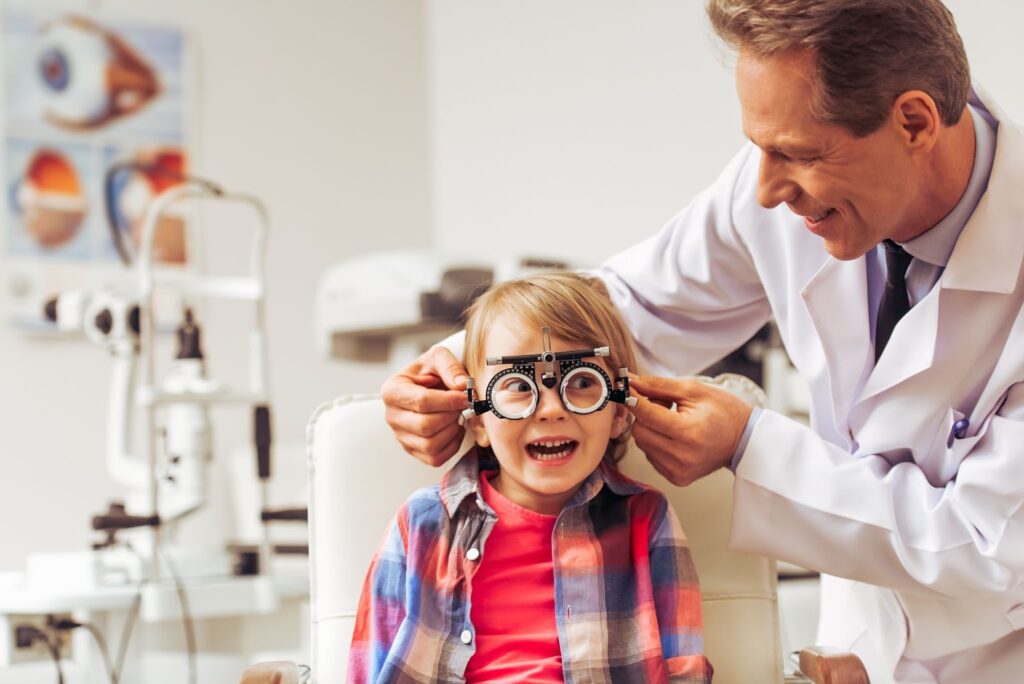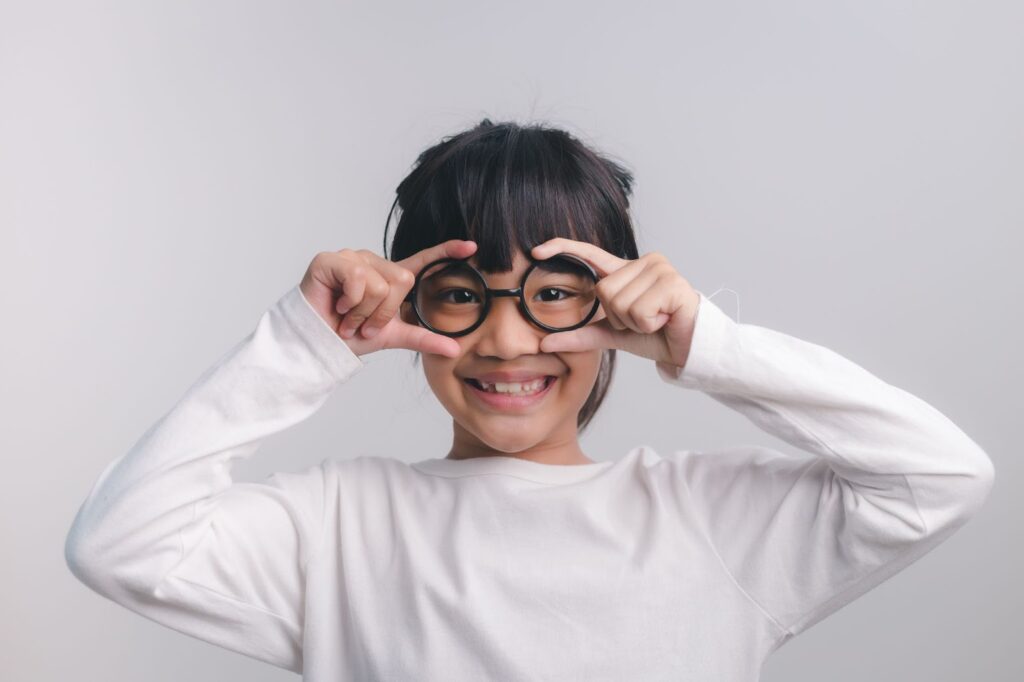Myopia is a common eye condition that develops during childhood, resulting in distant vision becoming blurry while nearby vision remains clear.
Myopia isn’t a serious condition, but leaving it unmanaged can lead to the development of high myopia and, subsequently, eye conditions, potentially leading to vision loss.
There’s no cure for myopia, but myopia control treatments are available to slow myopia progression in children and young adults.
Understanding Myopia
Myopia impacts how we see by making distant objects appear blurry while close-by objects remain clear. This can make tasks such as reading, writing, watching TV, and physical activity difficult.
Distance vision becomes blurry with myopia due to the shape of the eye. In an eye with no refractive error, the eye is round. When light enters the lens and is refracted by the cornea, light focuses directly on the retina, resulting in clear vision.
The shape of an eye with myopia is not perfectly round, but elongated. This change in shape affects how light focuses on the retina. When light enters the eye and is refracted by the cornea, light focuses in front of the retina, resulting in blurry distance vision.
Recognizing the symptoms of myopia early are crucial for timely intervention. Common symptoms include:
- Blurry vision when looking at distant objects
- Squinting to see clearly
- Eye strain and headaches
- Difficulty seeing while driving, especially at night
How Myopia Develops
The prevalence of myopia is rising and becoming more frequent among children. Myopia can develop at any age, but it’s most often seen in kids between 6 and 14 years old. In the U.S., about 5% of preschoolers and 9% of elementary-aged children are affected by it.
The exact cause of myopia is unknown, however, it’s believed to be influenced by both genetic and environmental factors.
Myopia tends to run in families. In fact, a child is more likely to develop myopia if one or both of their parents are nearsighted. Environmental components that affect myopia development in children include spending less time outdoors and prolonged exposure to close-up work and digital devices.
Children who spend more time outdoors are less likely to develop myopia. Exposure to natural light and looking at distant objects help maintain proper eye growth.
During childhood, our eyes grow and develop quickly, which is why seeing changes in prescription is common for children. Our eyes stop growing at around age 20, which is when we begin to see our vision prescription stabilize.
Importance of Myopia Control
Myopia itself is common and isn’t considered a serious eye condition, but leaving it untreated can cause refractive error to worsen and increase one’s risk of developing high myopia.
High myopia is characterized as having a refractive error of -6.00 diopters or more. Those with high myopia have an increased risk of developing:
- Retinal detachment
- Retinal tears
- Myopic maculopathy
- Glaucoma
When high myopia develops, both distant and nearby objects appear blurry, directly impacting vision clarity. Leaving high myopia unmanaged can lead to developing eye conditions that greatly increase the risk of vision loss.
There is no cure for myopia, but its progression can be effectively managed to reduce eye elongation and prevent one’s prescription for vision correction from worsening. Myopia control treatments are designed to alter the eye’s focusing mechanism or reduce eye strain so that the shape of the eye doesn’t continue to elongate.
Myopia management can start at any age, but should ideally begin during childhood, while the eye is still growing and susceptible to changes. Early intervention in slowing myopia progression yields more successful results. We most commonly see myopia management begin around age 6 to 8.

Options for Myopia Control
Visiting your optometrist for routine eye exams allows for monitoring of the rate of myopia progression, and allows your optometrist to tailor an appropriate treatment for myopia control.
Several options for myopia control have been shown to slow myopia progression in children effectively, and some options are suitable for young adults too!
Low-dose Atropine Drops
One of the most common ways to manage myopia is with low-dose atropine drops.
These drops contain medication that temporarily dilates the pupil and relaxes the eye’s focusing ability. These drops are applied to both eyes, once a day before bed. This helps prevent individuals from experiencing the side effects of treatment, which include blurry vision and light sensitivity, during the day.
Studies show that low-dose atropine drops have significantly slowed down the progression of myopia in kids aged 4 to 16. Currently, no evidence suggests that these drops are effective in slowing myopia progression in young adults.
Ortho-k Lenses
Orthokeratology (ortho-k) lenses are specialized hard contact lenses designed to be worn overnight. These lenses temporarily reshape the cornea, providing clear vision during the day without the need for glasses or regular contact lenses. Since the effects of corneal reshaping are temporary, you need to wear the lenses every night to maintain clear vision
Ortho-k lenses help slow myopia progression by flattening the cornea, which adjusts the eye’s focusing power. Some studies suggest that when light focuses directly on the retina, it can slow down eye elongation by acting as a stop signal for eye growth.
Unlike atropine drops, ortho-k lenses have shown evidence of slowing myopia progression in young adults up to age 29, making them an effective treatment option for both teenagers and young adults.
However, once the lenses are discontinued, the cornea will change shape and thus change the prescription. If a more permanent solution to the myopia is desired, like with Lasik, you will have to wait until the cornea stops changing. This usually takes several months, depending how long you have worn the ortho-k-lenses. A general rule is one month per year of wearing time.
Bifocal Eyeglasses
Bifocal eyeglasses contain lenses with two different optical powers: one for distance and another for near vision. This dual functionality helps reduce eye strain and eye elongation and improve peripheral focus, making it an effective option for myopia management.
Like atropine drops, using bifocal eyeglasses as a method of myopia management is most suitable for children between 8 and 13 years old.
Schedule a Visit
While myopia is common, leaving it unmanaged can lead to the risk of developing high myopia, and subsequent eye conditions, leading to vision loss.While myopia can’t be cured, several treatment options are available to help effectively reduce myopia progression. Connect with our team at The Vision Place to schedule a visit, and learn more about our myopia control treatments.


